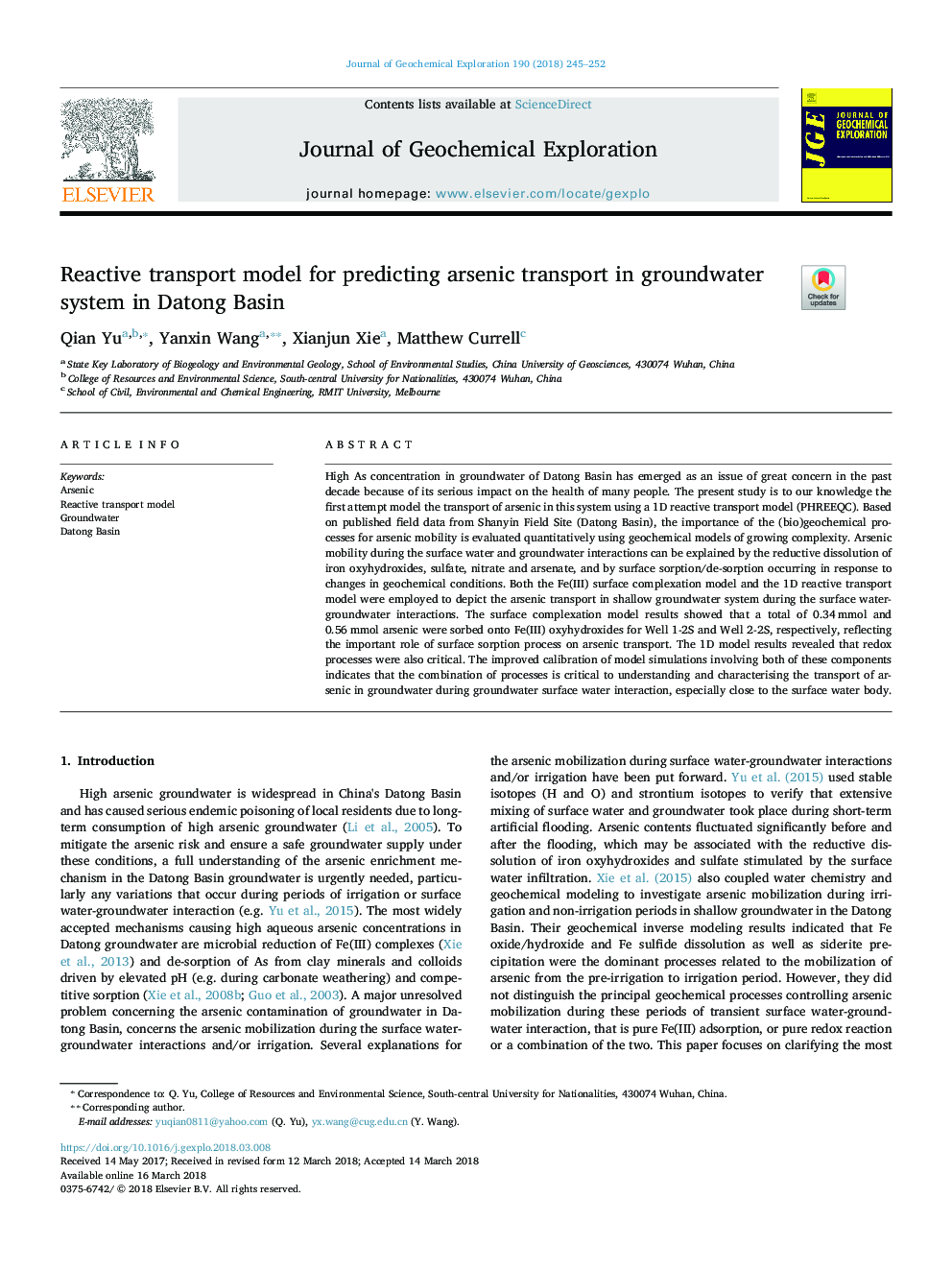| Article ID | Journal | Published Year | Pages | File Type |
|---|---|---|---|---|
| 8865904 | Journal of Geochemical Exploration | 2018 | 8 Pages |
Abstract
High As concentration in groundwater of Datong Basin has emerged as an issue of great concern in the past decade because of its serious impact on the health of many people. The present study is to our knowledge the first attempt model the transport of arsenic in this system using a 1D reactive transport model (PHREEQC). Based on published field data from Shanyin Field Site (Datong Basin), the importance of the (bio)geochemical processes for arsenic mobility is evaluated quantitatively using geochemical models of growing complexity. Arsenic mobility during the surface water and groundwater interactions can be explained by the reductive dissolution of iron oxyhydroxides, sulfate, nitrate and arsenate, and by surface sorption/de-sorption occurring in response to changes in geochemical conditions. Both the Fe(III) surface complexation model and the 1D reactive transport model were employed to depict the arsenic transport in shallow groundwater system during the surface water-groundwater interactions. The surface complexation model results showed that a total of 0.34â¯mmol and 0.56â¯mmol arsenic were sorbed onto Fe(III) oxyhydroxides for Well 1-2S and Well 2-2S, respectively, reflecting the important role of surface sorption process on arsenic transport. The 1D model results revealed that redox processes were also critical. The improved calibration of model simulations involving both of these components indicates that the combination of processes is critical to understanding and characterising the transport of arsenic in groundwater during groundwater surface water interaction, especially close to the surface water body.
Related Topics
Physical Sciences and Engineering
Earth and Planetary Sciences
Economic Geology
Authors
Qian Yu, Yanxin Wang, Xianjun Xie, Matthew Currell,
